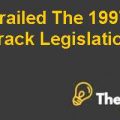
PUBLIC & PRIVATE PARTNERSHIP (PPP)
Public and Private Sector Partnership (PPP) is a commitment between the public and the private sector organizations to ensure a cost effective and efficient infrastructure and service.
This analysis is done with respect to financing and risk of sharing entity. This survey is based on international literature review and market survey of public and the private sector projects(PPP). Market survey of public and private partnership is done with collaboration of German Federation experts, while project financeincludes additional securities which are compared with ideal models of economic feasibility study.
PUBLIC AND PRIVATE PARTNERSHIP (PPP) FINANCING MODEL:
Public and Private Partnership (PPP) facilitates the Germany with hundreds of projects to develop the country for future endeavors in compliance with the core legislation of state to finance both public and private sector.Private financing is the key element for any investment, because private investment can raisehuge amounts as compared to public investment. In the same way public & private partnership also involves private financing to estimate the best cost of the project by considering all relevant costs, cash outlays and possible risks associated with the project.Borrowing cost is one of the important cost element to consider for the evaluation of projects because of the fact that while financing a project on borrowing from any financial institution there involves a cost of borrowing and the risks associated with it.Public &Private Partnership (PPP)normally transfers their risk to the private sector to accomplish their targets more efficiently and effectively.As private sector has an abandon access to the capital markets that enables them to make sure the investment infrastructure even when there is no public investment at all.Public & Private Partnership (PPP) is an entity that vows investors to provide them maximum return from the investment. They take money from them and invest in a profitable way so that they could payoff their investors with the desired return.
The financial models adopted by the public & the private partnership (PPP) in Germany are
- Project Financing Model, and
- Non-recourseForfeiting Model
PROJECT FINANCING MODEL:
Project financing model is the model that considers to invest in a way to get the possible beneficial outcomes from the project. In this model an investor usually accounts for the investment stream in order to make sure the financial feasibility of the project.Itdefines the size of investment and its terms and conditions to conduct Cost-Benefit analysis. If projects’ evaluation shows a higher degree of benefit than the cost required, that means the project is financially feasible and vice versa.Whilst the other financing is the public financing in which an investor is likely to consider outcomes/inflows from the project despite of consideration the overall position of the investment. Usually an investor while financing projects, seeks financial returns to cover the cash outlay.
The project financing is the risk bornefinancing by all the related parties of the contract. According to project financing model if default is made by any private contractor, an investor has right to change the contractor during the investment process.
The project financing in the balance sheet of the organization which is beneficial for a private contractor, because off balance sheet financing only shows the liability in the balance sheet with no asset or investment against that liability.While many other accounting and regulation bodies prohibited these type of off balance sheet financing, where the majority of shareholders are investing in debt finance.
The investor of project financing model of public private partnership PPP secures their investment. Investment to the investor of public private partnership (PPP) would be returned in given time as specified in the terms and conditions of the contract with certain degree of risk associated with the investment.
In the project financing model of the public private partnership (PPP) risk and return is associated with all the contracts and investments. The most of the financing in the project financing model would be made through the mixture of debt financing, equity financing and mezzanine financing, capital structure. Mezzanine capital financing is the expensive financing as compared to debt financing and equity financing in the project financing model of the public private partnership (PPP).
Nonperformance by the private contractor in case of project financing model, the investor would also bear the risk of the private contractor. The investment of the investor would not be reduced by the additional cost which incurred due to insolvency of the private contractor. This additional burden would ultimately transfer to the insolvent private contractor/administrator. In replace of the former private contractor the new contractor is liable to complete the rest of the project, under private partnership contract (PPP).
Non-recourse forfeiting of installments (Forfeiting Model):
The non-recourse forfeiting model is the special agreement of public andprivate partnership (PPP), in which the private contractor partially sales the right of claim on investment against the construction agreement withthe bank. The bank will then receive the debt payment instead of the private contractor....................
This is just a sample partial case solution. Please place the order on the website to order your own originally done case solution.












